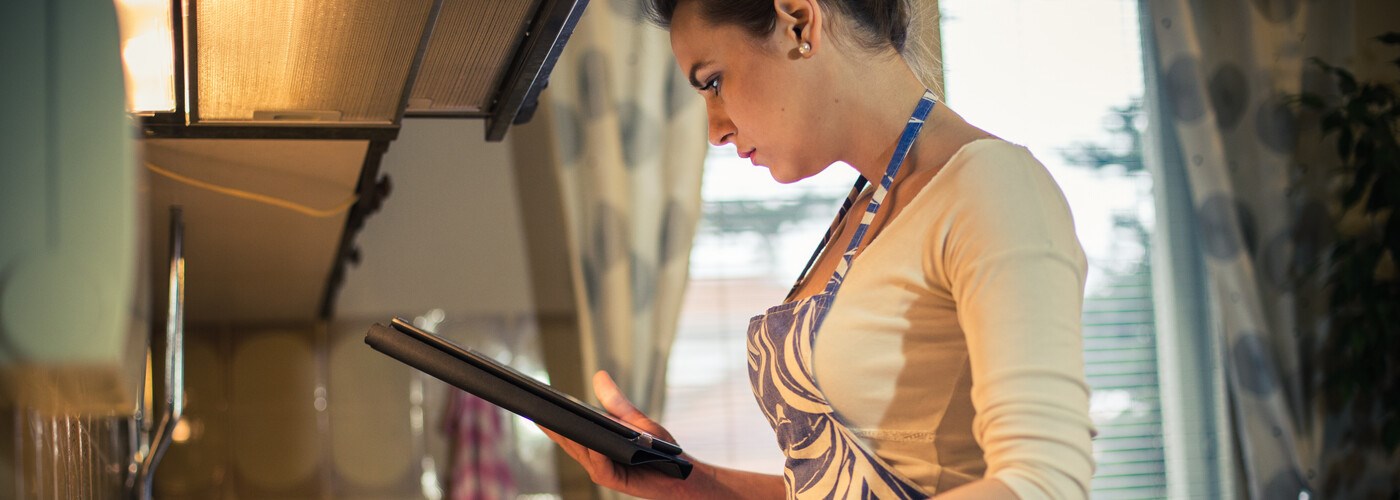Foods to Avoid When You Have Coeliac Disease or a Gluten Intolerance
Whether you live with coeliac (or celiac) disease or have a gluten intolerance, eating even a very small amount of gluten can cause serious gut health issues, skin problems, and mental health concerns. However, gluten reacts differently in the body, depending on the condition you have.
For instance, coeliac disease is an autoimmune disease whereby gluten causes the body’s immune system to attack itself. For some, this could lead to long-term medical complications. Non-coeliac gluten sensitivity is similar but there isn’t the same damage to the gut lining, which is why coeliac disease and gluten intolerances are regarded as different conditions in the health community.
As such, it’s essential that coeliacs follow a strict gluten-free diet to lead a healthy, active lifestyle while those with a gluten intolerance are advised to greatly reduce or eliminate gluten-containing foods completely.
Either way, you will likely be wanting to know whether everyday items like chicken is gluten-free or if there is gluten in crackers. Unfortunately, gluten crops up in a lot of unexpected places.
So, what is the best way you avoid gluten in your daily life? To answer this question, this article will run through the foods to avoid with coeliac disease, as well as what coeliacs can eat in their diet.
1. White pasta
Much like many types of bread, pasta is traditionally made from wheat flour, which puts it on our list of foods to avoid with coeliac disease. That means noodles, spaghetti, gnocchi, or any other type of pasta made with gluten-filled ingredients can cause long-term damage to the gut lining. If you have a gluten intolerance, pasta is likely to cause a serious flare-up.
But that does not mean you need to say goodbye to all the amazing Italian dishes that get your mouth watering – it’s just about making some small swaps. For example, coeliacs can eat gluten-free pastas, such as brown rice pasta and chickpea pasta.
To ensure you aren’t buying pasta foods that contain gluten, always check the ingredients before adding to your trolley.
2. Cereals
We know that cereals are the backbone of many a morning routine, but lots of the popular supermarket cereals are common examples of high gluten foods.
Cereals made with wheat, barley, and rye are the main offenders here, which includes your gluten-containing store cupboard favourites like Weetabix, Cheerios, Shreddies, and Bran Flakes. We’d also recommend avoiding porridge oats, unless specifically labelled as gluten-free on the packaging, as some oats can be contaminated by other grains during the production process.
Fortunately, many of the main cereal brands recognise that their products are foods high in gluten, offering alternatives that you can factor into your breakfast plans. For example, you can find gluten-free Cornflakes in your local supermarket – just take a wander down the Free From aisle for a smorgasbord of options.
Alternatively, if you want to move away from cereals and other breakfast foods with gluten completely, check out our six healthy breakfast recipes to see what coeliacs can eat.
3. Cakes and pastries
If you’ve got a sweet tooth or love nothing more than snacking on a post-lunch pastry with a steaming cup of tea, then you need to take note of this particular gluten foods list.
As many baked goods are made with wheat flour or other gluten-containing ingredients, those with coeliac disease should avoid most cakes available in supermarkets and bakeries. Pastries, such as croissants, doughnuts, and eclairs, are foods to avoid for those with coeliac disease, as can most biscuits and cookies.
However, there are many sweet treats that coeliacs can eat, including many types of fudge, macarons, rice pudding, and fruit sorbet (although always check the packaging). There are also gluten-free alternatives of these wheat intolerance foods to avoid, such as flourless chocolate cake or cheesecakes with a gluten-free crust.
4. Condiments
While you may have been aware that bread, pasta, cereal, and cakes are gluten foods to avoid, many do not realise that their favourite condiments can also cause health problems for those with coeliac disease.
Tomato ketchup, barbecue sauce, malt vinegar, salad dressings, and cream-based sauces make the gluten food list in this case, which is bad news for those who love to dip their chips. The natural ingredients in each of these sauces are typically gluten-free, but it’s the flavourings and additives that can cause a flare up.
If you’re looking for an alternative to your usual condiment of choice, mayonnaise, salad cream, and Sriracha sauce are often safe choices. Dijon and wholegrain mustard are typically gluten-free too.
It’s important to check the back of any condiments before adding to your basket, as the ingredients might change from brand to brand.
5. Bread
While many won’t thank us for steering them away from bread, the gluten found in the grains of wheat, barley, and rye can cause health problems for those with coeliac disease.
Unless labelled 'gluten-free' on the packaging or at the bakery, coeliacs should avoid white, seeded and wholewheat bread, rye, pita, naan, and sourdough bread, along with other bread products such as focaccia.
Contrary to popular belief, however, fresh yeast is gluten-free, meaning you can still find tasty bread alternatives to these gluten foods. Either look for gluten-free breads, wraps, and rolls in the supermarket, or roll your sleeves up and start baking up your own gluten-free goods!
Other gluten intolerance foods to avoid
So, that’s the most common offenders, but what about the rest of the foods to avoid with coeliac disease? Take a look at more high gluten foods, below:
- Beer
- Breaded or coated fried foods
- Cereal bars
- Chapattis
- Chicken broth
- Couscous
- Crackers
- Falafel
- French fries
- Muesli and granola
- Pancakes and waffles
- Pies
- Pretzels
- Processed meats
- Soy sauce
What can coeliacs eat?
So, we’ve listed off gluten intolerance foods to avoid if you have coeliac disease, but what about the foods you can eat? Well, we’ve provided a selection of gluten-free foods, below, that coeliacs can eat without any stomach upset:
Fruit and veg: All fresh fruits and vegetables are gluten-free, meaning you can eat your five a day without causing any gut health issues.
Nuts and seeds: Plain almonds, cashews, peanuts, and sunflower seeds are all suitable for those with coeliac disease and contain lots of protein. You just need to be careful of nuts or seeds that have extra flavouring; always read the ingredients before eating.
Meat and fish: All fresh meats and fish are naturally gluten-free, even if they are corn-fed. However, processed meats that use fillers or products made with breadcrumbs may contain gluten in their ingredients, so check the packaging first.
Milk and cheese: Coeliacs can eat fresh dairy products, such as milk, cheese, and yoghurt, providing they have not been processed or do not contain artificial flavours. This also includes protein shakes, if you want to keep up your current pre-workout diet. Read the label on any dairy products to be doubly sure before consuming.
To find out more about foods that can improve gut health, as well as other nutritional advice, head over to our nutrition page on our Be Healthy hub. You can find healthy recipes, such as our Cajun honey salmon, as well as guidance on how to eat a healthy diet.
Medically reviewed by Cheryl Lythgoe in October 2024.


